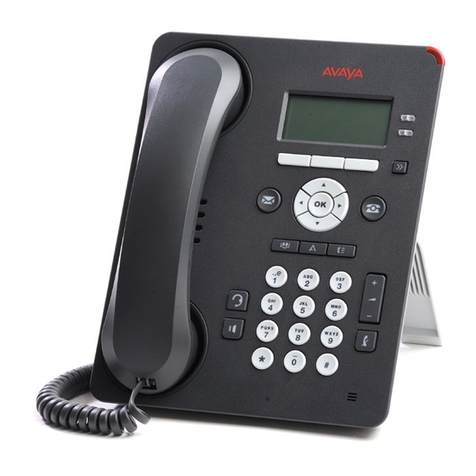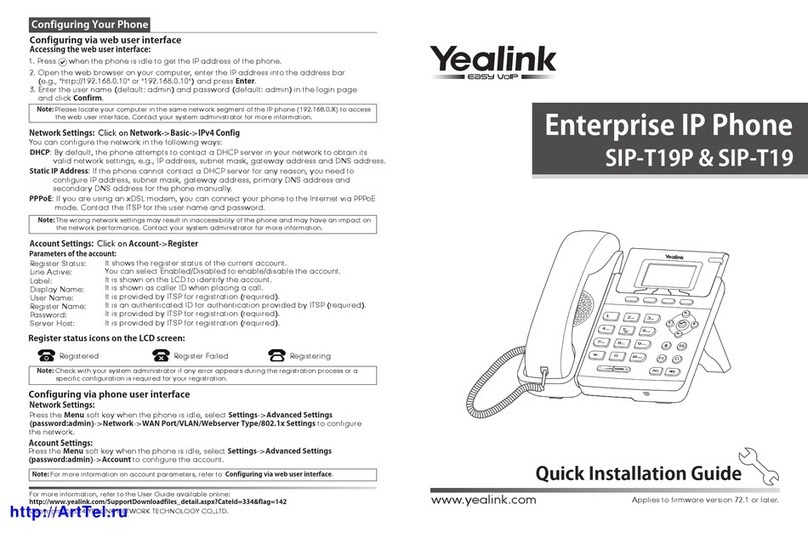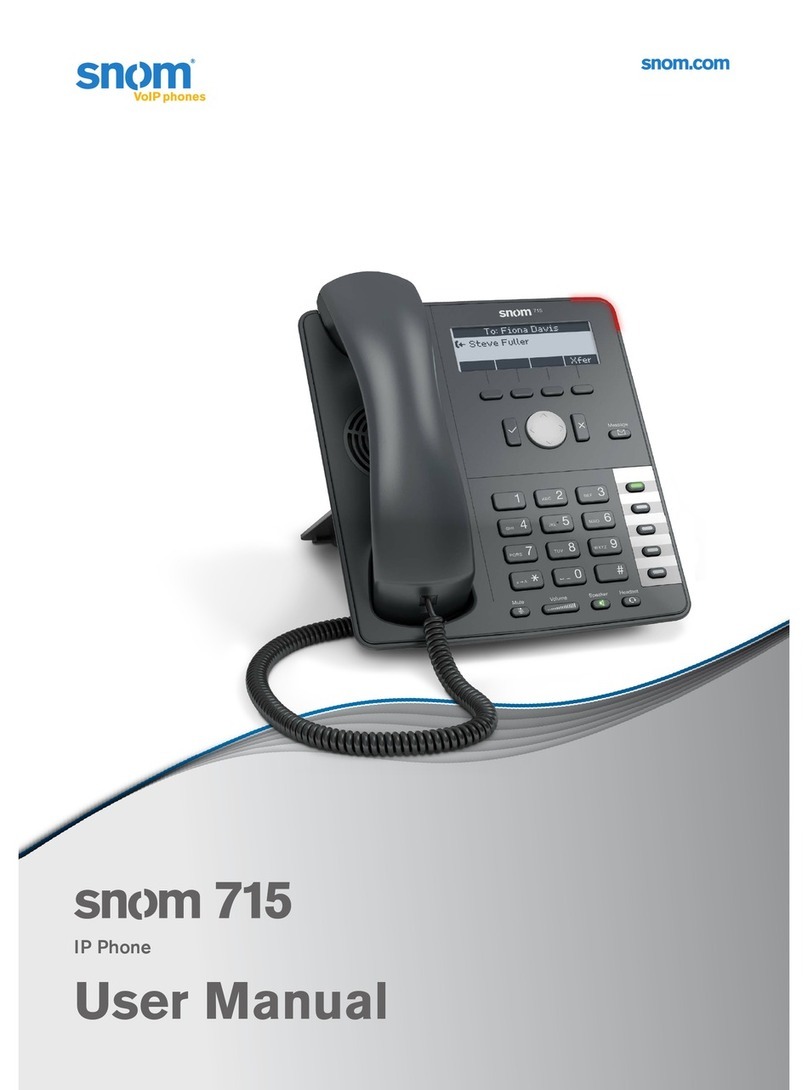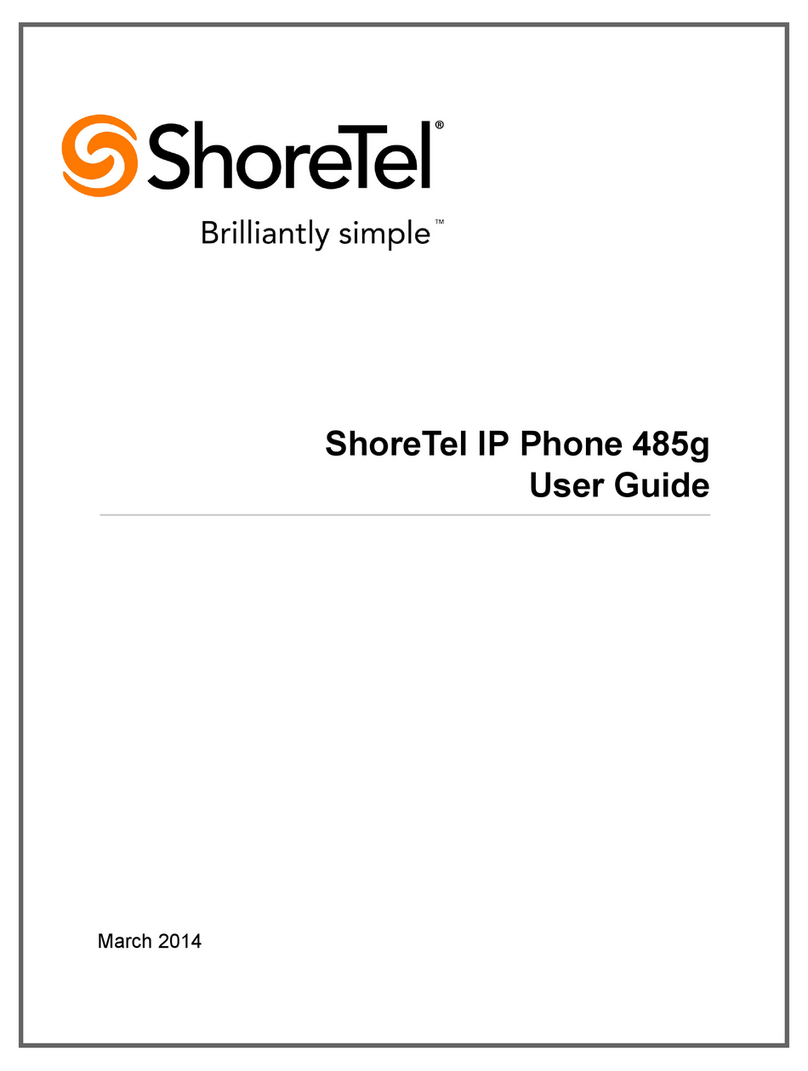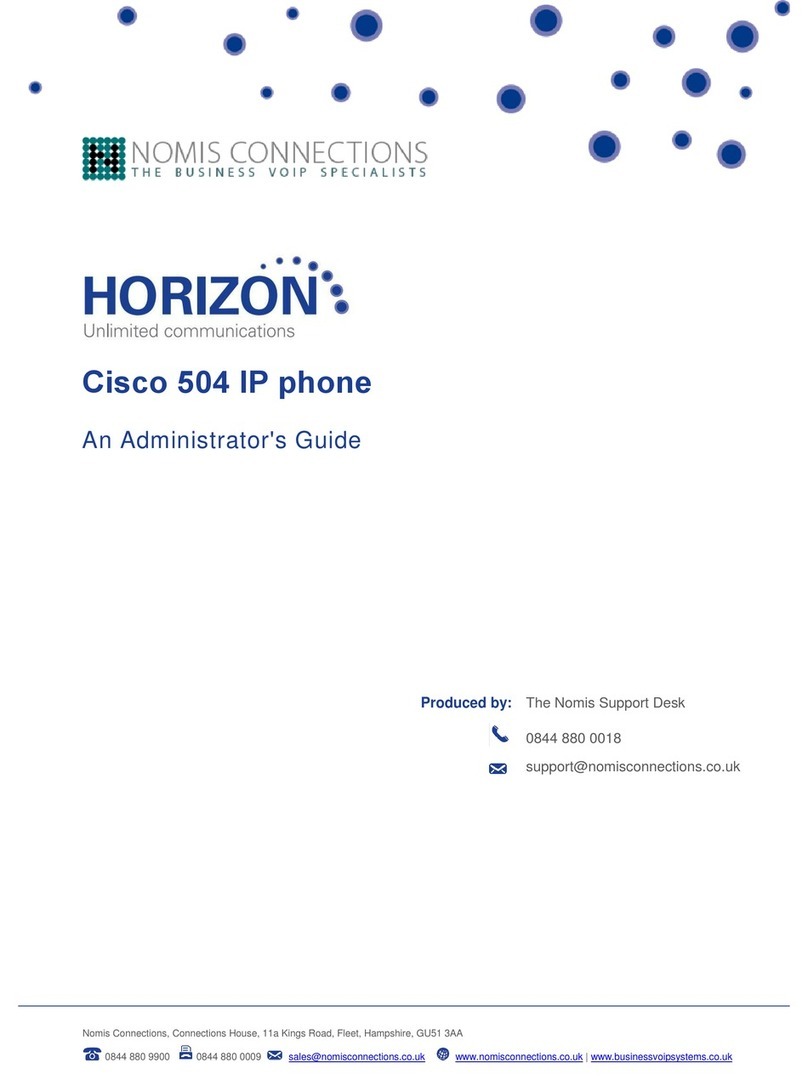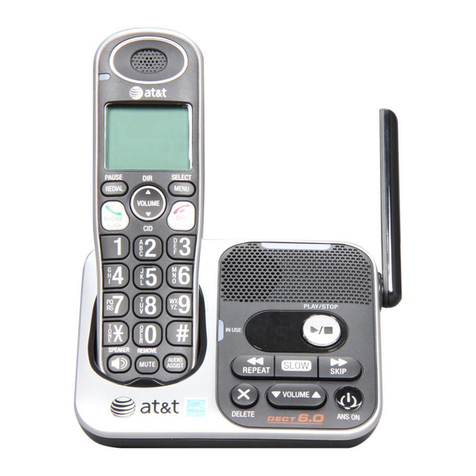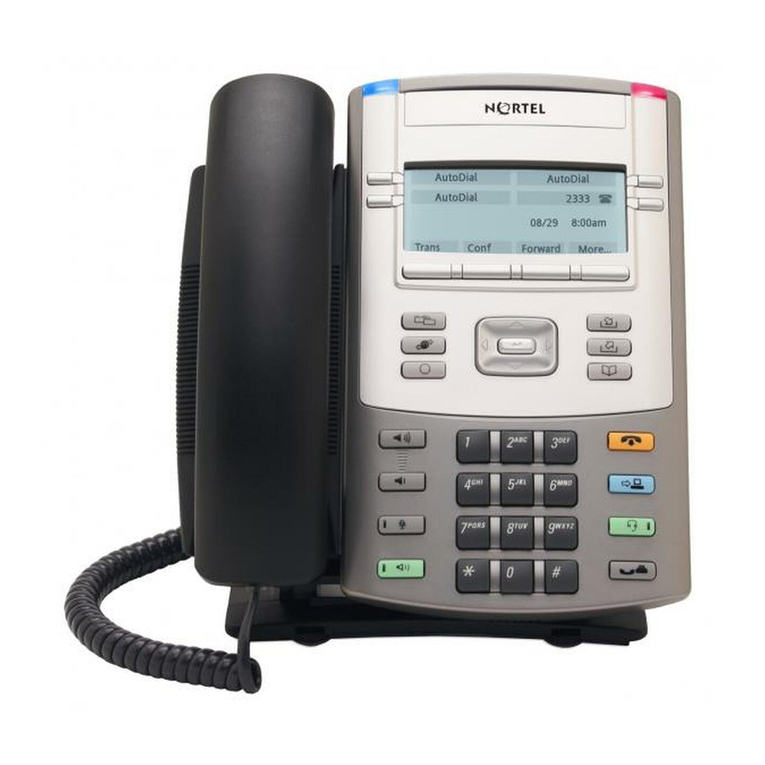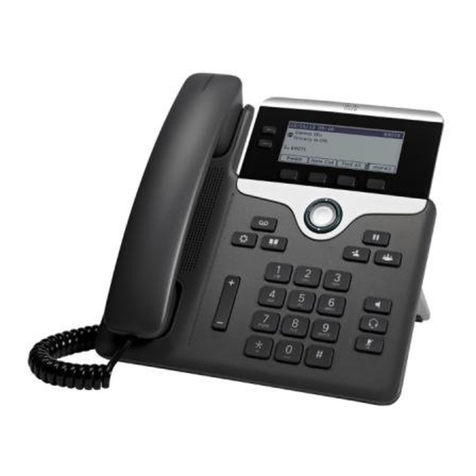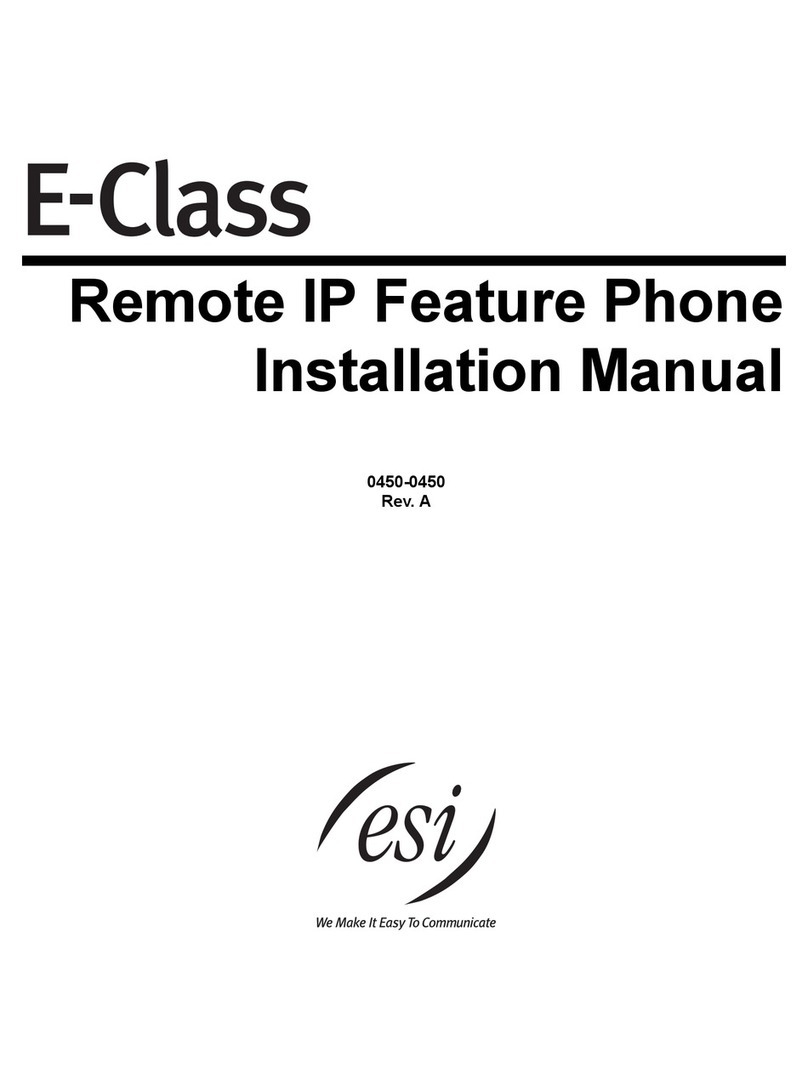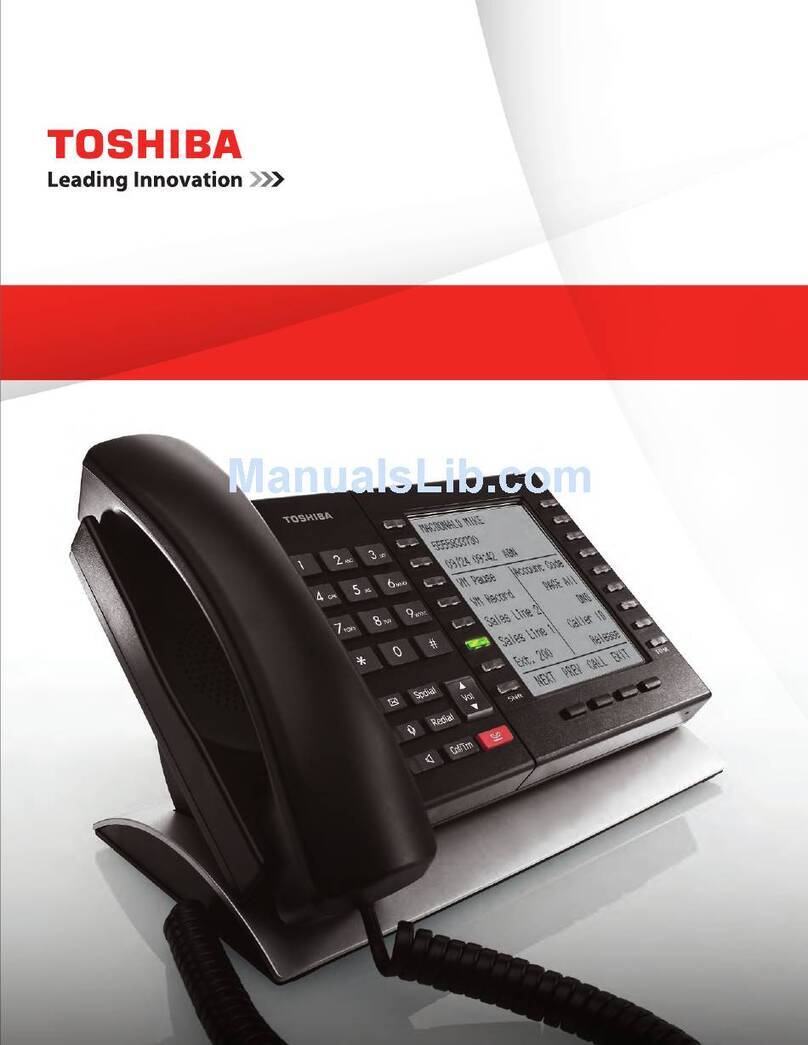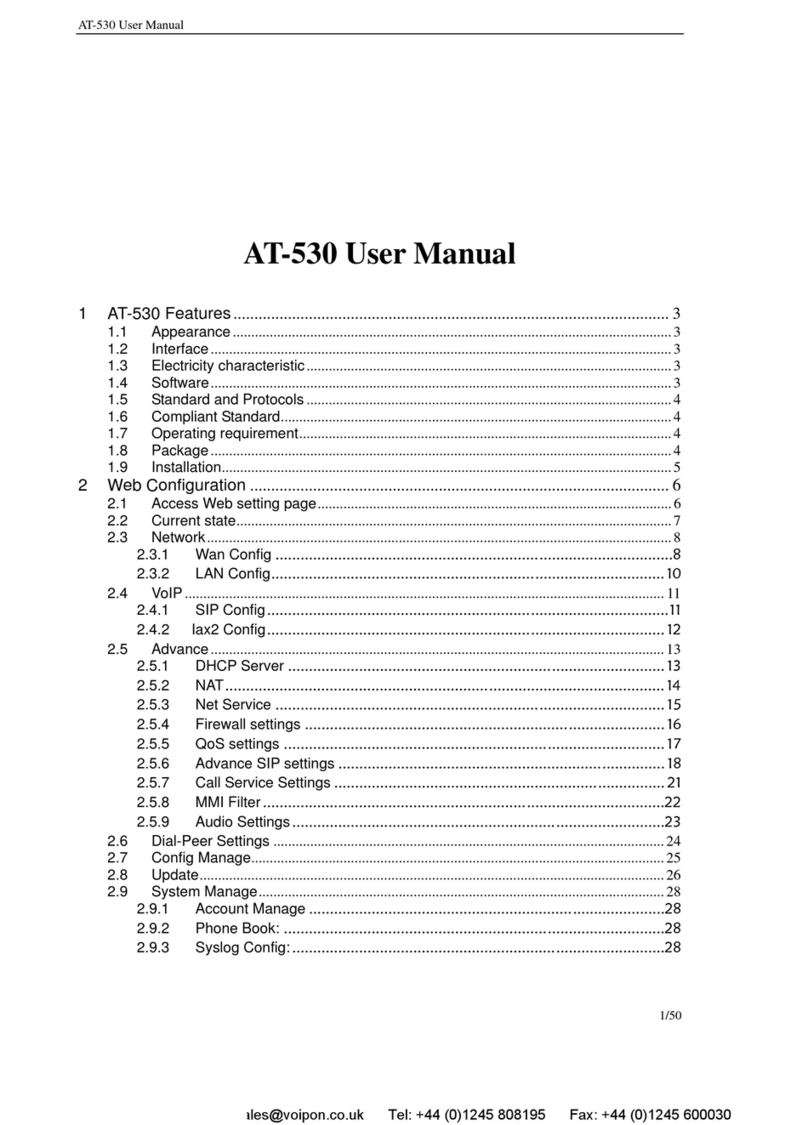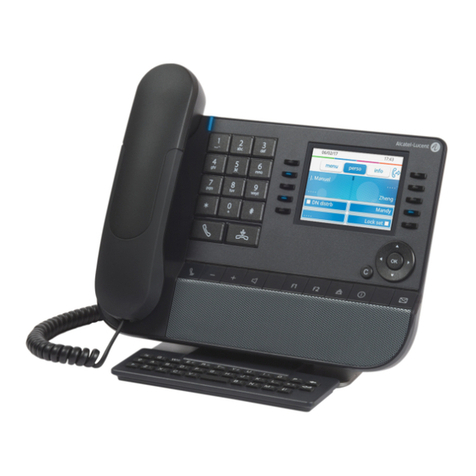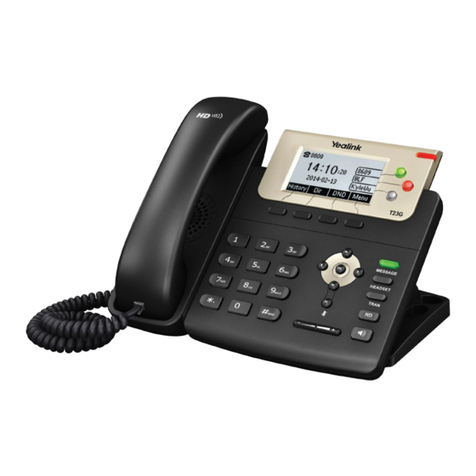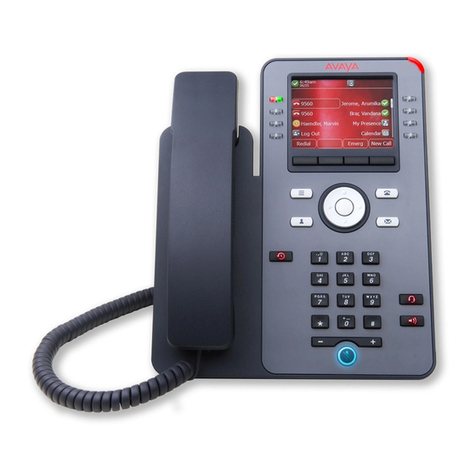Unitech HT680 User manual

HT680 Rugged Handheld Terminal
- HT680 -
User’s Manual
400737G Version 1.1


i
Preface
About This Manual
This manual explains how to install, operate and maintain the HT680 Rugged
Enterprise Terminal.
No part of this publication may be reproduced or used in any form, or by any
electrical or mechanical means, without permission in writing from the
manufacturer. This includes electronic or mechanical means, such as
photocopying, recording, or information storage and retrieval systems. The
material in this manual is subject to change without notice.
© Copyright 2009 Unitech Electronics Co., Ltd. All rights reserved.
Unitech global website address: http:\\www.unitech-adc.com
Bluetooth is a registered trademark of Bluetooth SIG.
Microsoft, Windows and ActiveSync are either
registered trademarks or trademarks of Microsoft
Corporation. Other product names mentioned in this
manual may be trademarks or Registered
trademarks of their respective companies and are
hereby acknowledged.
Unitech is a member of Oracle Embedded Software
Licensing Program.

ii
Regulatory Compliance Statements
FCC Warning Statement
This equipment has been tested and found to comply with the limits for a Class
B digital device, pursuant to Part 15 of the FCC rules. These limits are
designed to provide reasonable protection against harmful interference in a
residential installation. This equipment generates, uses and can radiate radio
frequency energy and, if not installed and used in accordance with the
instructions, may cause harmful interference to radio communications.
However, there is no guarantee that interference will not occur in a particular
installation. If this equipment does cause harmful interference to radio or
television reception, which can be determined by turning the equipment off and
on, the user is encouraged to try to correct the interference by one or more of
the following measures:
–Reorient or relocate the receiving antenna.
–Increase the separation between the equipment and receiver.
–Connect the equipment into an outlet on a circuit different from that to
which the receiver is connected.
–Consult the dealer or an experienced radio/TV technician for help.
1. This Transmitter must not be co-located or operating in conjunction with
any other antenna or transmitter.
2. This equipment complies with FCC RF radiation exposure limits set forth
for an uncontrolled environment. To maintain compliance with FCC RF
exposure compliance requirements, avoid direct contact to the
transmitting antenna during transmitting.
3. Any changes or modifications (including the antennas) made to this device
that are not expressly approved by the manufacturer may void the user’s
authority to operate the equipment.
FCC Label Statement
This device complies with part 15 of the FCC rules. Operation is subject to the
following two conditions:
1. This device may not cause harmful interference, and
2. This device must accept any interference received, including interference
that may cause undesired operation.

iii
Canadian Compliance Statement
This Class B Digital apparatus meets all requirements of the Canadian
Interference-Causing Equipment Regulations.
Cet appareil numerique de la classe B respecte les exigences du Reglement
sur le material broilleur du Canada.
European Conformity Statement
Declaration of Conformity with Regard to the R&TTE 1999/5/EC and EMC
89/336/ EEC directives.
RoHS Statement
This device conforms to RoHS (Reduction Of Hazardous
Substances) European Union regulations that set
maximum concentration limits on hazardous materials
used in electrical and electronic equipment.
Taiwan NCC Warning Statement
交通部電信總局低功率電波輻射性電機管理辦法 (930322)
根據交通部低功率管理辦法規定:
第十二條 經型式認證合格之低功率射頻電機,非經許可,公司、商號或使用者
均不得擅自變更頻率、加大功率或變更原設計之特性及功能。
第十四條 低功率射頻電機之使用不得影響飛航安全及幹擾合法通信;經發現有
幹擾現象時,應立即停用,並改善至無幹擾時方得繼續使用。前項合
法通信,指依電信法規定作業之無線電通信。
低功率射頻電機須忍受合法通信或工業、科學及醫療用電波輻射性電
機設備之幹擾。

iv
Laser Information
The Unitech HT680 series is certified in the U.S. to conform to the
requirements of DHHS/CDRH 21CFR Subchapter J and to the requirements of
IEC 825-1. Class II and Class 2 products are not considered to be hazardous.
The HT680 series contains internally a Visible Laser Diode (VLD) whose
emissions do not exceed the maximum limits as set forth in the above
regulations. The scanner is designed so that there is no human access to
harmful laser light during normal operation, user maintenance or during
prescribed service operations.
The laser safety warning label required by the DHHS/IEC for the HT680 series'
optional laser scanner module is located on the memory compartment cover,
on the back of the unit.
CAUTION! Use of controls or adjustments or performance of procedures other
than those specified herein may result in hazardous laser light.
Use of optical instruments with the scanner will increase eye
hazard. Optical instruments include binoculars, microscopes, and
magnifying glasses. This does not include eyeglasses worn by
the user.
Battery Notices
The HT680 is equipped with a Lithium-Ion battery pack and backup battery.
Both batteries will discharge after an extended period of not being used.
If both batteries are discharged, you must recharge the unit for 16 hours in
order to fully charge both the main battery and backup battery. You can
recharge the HT680 by the following methods:
1. Plug the USB charging cable into the HT680 and plug the 5V/3A AC-DC
adapter into the power jack of the USB charging cable.
2. Place the HT680 into the docking station and plug the 5V/3A AC-DC
adapter into the power jack of the docking station.

v
If the main battery is removed, the backup battery ensures the data on SDRAM
is safe for up to 6 hours. To prevent data loss, do not leave the HT680
uncharged with the main battery removed for an extended period. See First
Time to Charge the Main Battery & Backup Battery on page 9 for more details.
Note: Unitech advises rechargeable batteries be replaced every year or after
500 charge/discharge cycles to guarantee optimal performance. It is
normal for the battery to balloon or expand after one year or the
maximum of 500 cycles. Although it does not cause harm, the battery
cannot be used again and must be disposed of according to the
location's safe battery disposal procedures.
If the performance decrease is greater than 20% in a Lithium-Ion battery,
the battery is at the end of its life cycle. Do not continue to use, and
ensure the battery is disposed of properly.
The length of time that the battery power lasts depends on the battery type and
how the device is used. Conserve the battery life through the following:
Avoid frequent full discharges because this places additional strain on the
battery. Several partial discharges with frequent recharges are better than
a deep one. Recharging a partially charged lithium-Ion battery does not
cause harm because there is no memory.
Keep the lithium-Ion battery cool. For prolonged storage, keep the battery
at a 40% charge level.
Do not leave the Lithium-Ion battery discharged and unused for an
extended period because the battery will wear out and the battery’s life will
be cut in half.
Battery charge notice
It is important to consider the environment’s temperature whenever the
Lithium-Ion battery pack is charged. Charging is most efficient at normal room
temperature or in a slightly cooler environment. It is essential that batteries are
charged within the stated range of 10°C to 45°C. Charging batteries outside of
the specified range could damage the batteries and shorten their charging life
cycle.
CAUTION! Do not charge batteries at a temperature lower than 0°C, which will
make the batteries unstable and unsafe. Please use a battery
temperature-detecting device as a charger to ensure a safe
charging temperature range. To protect the battery from inflating,
the battery includes thermal protection and will not charge when

vi
the temperature of the battery is over 50 degrees Celsius.
Storage and safety notice
Although charged Lithium-Ion batteries may be left unused for several months,
their capacity may be depleted due to build up of internal resistance. If this
happens they will require recharging prior to use. Lithium-Ion batteries may be
stored at temperatures between -20°C to 60°C, however they may deplete
more rapidly at the higher temperature ranges. It is recommended to store
batteries within normal room temperature ranges.
Warranty
The following items covered under Unitech Limited Warranty are free from
defects during normal use:
HT680 – 1-year limited warranty.
Lithium-Ion battery – 6-month limited warranty.
Warranty becomes void if equipment is modified, improperly installed or used,
damaged by accident or neglect or if any parts are improperly installed or
replaced by the user.
Use only the adapter supplied. Using the wrong adapter may damage the unit
and will void the warranty.

vii
Table of Contents
Preface
About This Manual .......................................................................................... i
Regulatory Compliance Statements ..........................................................ii
FCC Warning Statement.....................................................................ii
FCC Label Statement .........................................................................ii
Canadian Compliance Statement ......................................................iii
European Conformity Statement ....................................................... iii
RoHS Statement................................................................................ iii
Taiwan NCC Warning Statement ....................................................... iii
Laser Information ......................................................................................iv
Battery Notices..........................................................................................iv
Battery charge notice..........................................................................v
Storage and safety notice ..................................................................vi
Warranty ...................................................................................................vi
Table of Contents ......................................................................................... vii
Chapter 1
Getting Started ............................................................................................... 1
Introducing the HT680 .............................................................................. 1
Notice........................................................................................................ 1
Warranty ............................................................................................ 2
Regulatory ......................................................................................... 2
HT680 Model Specification ....................................................................... 3
HT680 Accessories ................................................................................... 4
Communication and Charging Cradle................................................ 4
Communication and Charging Cable Kits.......................................... 4
Universal Adaptor .............................................................................. 4
Holster ............................................................................................... 4
Hand Strap & Stylus .......................................................................... 4
Li-Ion Battery Pack ............................................................................ 4
HT680 Product Introduction & Accessory Kit ............................................ 5
HT680 Front View.............................................................................. 6
HT680 Rear View .............................................................................. 7
HT680 First Steps................................ Error! Bookmark not defined.8

viii
Install the Battery Pack ...................................................................... 8
Switch On Backup Battery ................................................................. 9
Supply Power to the HT680............................................................... 9
First Time to Charge the Main Battery & Backup Battery .................. 9
Protective Screen Film..................................................................... 10
First Time Use of the HT680............................................................ 10
Setting the Time Zone First...............................................................11
Setting Date/Time ............................................................................ 12
Chapter 2
Using the Keypad and Scanner .................................................................. 13
Keypad.................................................................................................... 13
HT680 HotKey ................................................................................. 14
Software Keyboard (Windows CE Keyboard) ......................................... 14
Opening the Windows CE Keyboard ............................................... 14
Other Character Support from WinCE Keyboard............................. 15
Bar Code Scanner .................................................................................. 15
Chapter 3
Power system ............................................................................................... 17
Charging the Lithium-Ion Battery Pack ................................................... 17
Charging the Main and Backup Battery for the First Time............... 17
Environment Consideration for Charging......................................... 18
Power Status Indication ................................................................... 18
“Backup Battery Low” Icon............................................................... 18
Charging the Lithium-Ion Battery Pack ................................................... 18
Storage and Safety Precautions ............................................................. 19
Backlight Setting ..................................................................................... 20
Warm Boot / Cold Boot ........................................................................... 20
Warm Boot ....................................................................................... 20
Warm Boot via Software .................................................................. 21
Warm Boot via Hardware................................................................. 21
Cold Boot ......................................................................................... 21
Cold Boot via Software .................................................................... 22

ix
Chapter 4
Data Communication ................................................................................... 23
Introduction ............................................................................................. 23
Connecting.............................................................................................. 23
Serial or USB Cable......................................................................... 23
Docking Station................................................................................ 24
RF Communication .......................................................................... 24
Using ActiveSync ............................................................................. 24
Installation............................................................................................... 25
Using the Mobile Devices Window.......................................................... 27
Changing Communications Settings....................................................... 28
Wireless Communication ................................................................. 28
Bluetooth Setup ............................................................................... 29
Bluetooth ActiveSync ....................................................................... 29
Chapter 5
Useful Utilities .............................................................................................. 31
Introduction ............................................................................................. 31
Scanner Setting ............................................................................... 31
Scan2Key ........................................................................................ 33
Registry Backup/Restore ................................................................. 34
UniPing ............................................................................................ 34
Chapter 6
Device Setting .............................................................................................. 35
Introduction ............................................................................................. 35
Info................................................................................................... 36
Funckey ........................................................................................... 36
IO ..................................................................................................... 37
Server .............................................................................................. 37
Virtual Key ....................................................................................... 39
Screen ............................................................................................. 40
Ping.................................................................................................. 40
CPU ................................................................................................. 41
Backup............................................................................................. 41
Battery ............................................................................................. 41
Appendix
Worldwide Support ...................................................................................... 43

x

1
Chapter 1
Getting Started
Introducing the HT680
Notice
1. This unit is equipped with a battery pack and backup battery. It is possible
that the Unitech HT680 may not be powered on due to battery discharge
as a result of storage. In the above situation for first-time use, plug the
HT680 to the charging cable or charging cradle (with 5V/2A AC-DC
adapter), and charge the unused unit for over 16 hours in order to fully
charge both batteries.
2. Under normal conditions, the backup battery will be charged from external

2
power or the main battery (if the main battery still has enough power to
turn on). If it is charged for the first time, the backup battery will be fully
charged if the main battery is fully charged.
Warranty
Unitech's Limited Warranty provides four different warranty periods for different
parts and accessories:
Terminal is covered by one-year limit warranty.
Docking Station is covered by one-year limit warranty.
Cable is covered by one-year limit warranty.
Battery is covered by three-month warranty.
Regulatory
Compliance with VCCI, CE, FCC, BSMI, UL, CCC

3
HT680 Model Specification
Drop
1.5M
IP Rating
IP54
Operation Temp.
-10°C to 50°C
Storage Temp.
-20°C to 70°C (W/O Battery)
Humidity
5%~95% non-condensing
Rugged/Environment
ESD
Contact ± 8KV, Air ± 12KV
Keypads
Full Alphanumeric
12 keys
Weight (g)
280g ± 10g (W/O Battery)
Physical
Dimension (L x W x H mm)
169 x 55 x 30
Main Battery Type
3.7V / 2200mAH Li-ion,
8.14WH
Battery Recharging Time
Under 4 hrs.
Battery Life
BT Up to 12 hours
WLAN 8 hours
GPRS 6 hours
Power supply &
Management
Backup Battery Type
70mAH Li-polymer
2.7” Color TFT LCD with Touch
Panel
v
Display
Display pixels
240 x 320 pixel
Docking Station
USB/Ethernet, Four-Bay Multi. Charger
Bar code Scanner
Reader
1D Laser & 2D Imager
CPU Processor
PXA270 - 520MHz
Operating System
WinCE 5.0 Pro.
Flash ROM
512MB
System Architecture
SDRAM
128MB
Speaker
v
Communication Interface
USB Client / USB Host
Expansion Memory Slot
miniSD Slot
v
802.11b/g/ GPRS / GPRS EDGE
v
Radio Options
Bluetooth
v
Remark: V= Contain ; X= Not Contain

4
HT680 Accessories
Each of the following items are sold separately to enhance your HT680
terminal’s capabilities.
Communication and Charging Cradle
The USB cradle is for data transmission and charging purposes. The modem
cradle is for data transmission via phone lines and charging purposes.
Communication and Charging Cable Kits
The included USB cable or an optional serial cable connects the HT680
terminal directly to a peripheral device for communication and acts as a power
source for charging.
Universal Adaptor
This power supplier adaptor plugs the terminal directly into a switch to power
the terminal and charge the battery pack. This accessory converts the
120~240 Volts for different countries use.
Holster
The holster holds the terminal for mobile use.
Hand Strap & Stylus
The hand strap is convenient for carrying your HT680 and also includes a
stylus attachment.
Li-Ion Battery Pack
The 3.7v, 1950mAh Li-Ion rechargeable battery pack provides the main power
supply for HT680 terminal.

5
HT680 Product Introduction & Accessory Kit
HT680 Terminal
Manual CD
Communication Cable
Battery
Adaptor
Plugs
Communication Cradle

6
HT680 Front View
LED Indicator
Touch Screen Display
Trigger
Alpha
Function
Power
I/O Port

7
HT680 Rear View
miniSD Slot
Bar Code Scanner
Stylus
Speaker
Battery Cover

8
HT680 First Steps
Before using the HT680 for the first time, please ensure the battery is fully
charged. There are three ways to charge your HT680:
Docking station
USB/charging cable
Rechargeable Lithium-Ion battery pack
NOTE: Data loss may occur if the HT680's backup battery is not adequately
charged. Before charging the main battery, make sure the backup
battery switch is ON.
Install the Battery Pack
1. Remove the battery cover.
2. Move the backup battery switch to the ON position (see the description
below).
3. Insert the battery pack so that the contacts on the battery pack line up
with the contacts in the battery compartment. Fully secure the battery.
Other manuals for HT680
2
Table of contents
